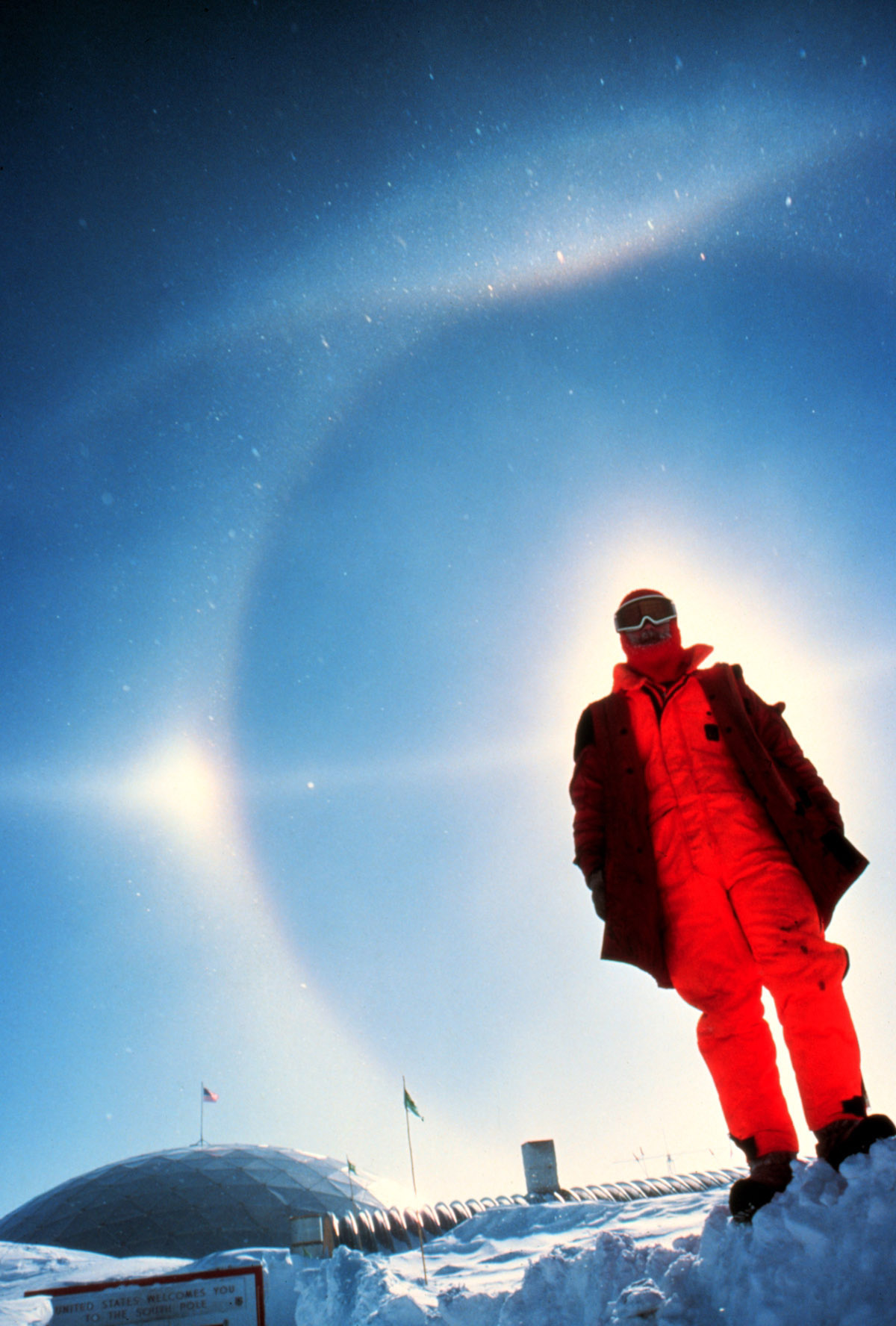Lower Tangent Arc on:
[Wikipedia]
[Google]
[Amazon]


 Tangent arcs are a type of
Tangent arcs are a type of
www.paraselene.de - Tangent Arcs
(including several HaloSim simulations.)
Atmospheric Optics - Alaska Lower Tangent Arc
- Great photo b
Ryan Skorecki
- A photo taken from an aeroplane.
Lower Tangent Arc Sep 25, 2005
- Photos of a lower tangent arc. Atmospheric optical phenomena ja:外接ハロ#上端接弧と下端接弧


 Tangent arcs are a type of
Tangent arcs are a type of halo
Halo, halos or haloes usually refer to:
* Halo (optical phenomenon)
* Halo (religious iconography), a ring of light around the image of a head
HALO, halo, halos or haloes may also refer to:
Arts and entertainment Video games
* ''Halo'' (franch ...
, an atmospheric optical phenomenon
Optical phenomena are any observable events that result from the interaction of light and matter.
All optical phenomena coincide with quantum phenomena. Common optical phenomena are often due to the interaction of light from the sun or moon wit ...
, which appears above and below the observed Sun
The Sun is the star at the center of the Solar System. It is a nearly perfect ball of hot plasma, heated to incandescence by nuclear fusion reactions in its core. The Sun radiates this energy mainly as light, ultraviolet, and infrared radi ...
or Moon
The Moon is Earth's only natural satellite. It is the fifth largest satellite in the Solar System and the largest and most massive relative to its parent planet, with a diameter about one-quarter that of Earth (comparable to the width of ...
, tangent
In geometry, the tangent line (or simply tangent) to a plane curve at a given point is the straight line that "just touches" the curve at that point. Leibniz defined it as the line through a pair of infinitely close points on the curve. Mo ...
to the 22° halo. To produce these arcs, rod-shaped hexagon
In geometry, a hexagon (from Greek , , meaning "six", and , , meaning "corner, angle") is a six-sided polygon. The total of the internal angles of any simple (non-self-intersecting) hexagon is 720°.
Regular hexagon
A '' regular hexagon'' has ...
al ice crystals need to have their long axis aligned horizontally.
Description
Upper arc
The shape of an upper tangent arc varies with the elevation of the Sun; while the Sun is low (less than 29–32°) it appears as an arc over the observed Sun forming a sharp angle. As the Sun is seen to rise above the Earth's horizon, the curved wings of the arc lower towards the 22° halo while gradually becoming longer. As the Sun rises over 29–32°, the upper tangent arc unites with the lower tangent arc to form thecircumscribed halo
In geometry, the circumscribed circle or circumcircle of a polygon is a circle that passes through all the vertices of the polygon. The center of this circle is called the circumcenter and its radius is called the circumradius.
Not every polyg ...
.
Lower arc
The lower tangent arc is rarely observable, appearing under andtangent
In geometry, the tangent line (or simply tangent) to a plane curve at a given point is the straight line that "just touches" the curve at that point. Leibniz defined it as the line through a pair of infinitely close points on the curve. Mo ...
to a 22° halo centred on the Sun. Just like upper tangent arcs, the shape of a lower arc is dependent on the altitude of the Sun. As the Sun is observed slipping over Earth's horizon the lower tangent arc forms a sharp, wing-shaped angle below the Sun. As the Sun rises over Earth's horizon, the arc first folds upon itself and then takes the shape of a wide arc. As the Sun reaches 29-32° over the horizon, it finally begins to widen and merge with the upper tangent arc to form the circumscribed halo.
Since by definition, the Sun elevation must exceed 22° above the horizon, most observations are from elevated observation points such as mountains and planes.
Origin
Both the upper and lower tangent arc form whenhexagon
In geometry, a hexagon (from Greek , , meaning "six", and , , meaning "corner, angle") is a six-sided polygon. The total of the internal angles of any simple (non-self-intersecting) hexagon is 720°.
Regular hexagon
A '' regular hexagon'' has ...
al rod-shaped ice crystals in cirrus cloud
Cirrus ( cloud classification symbol: Ci) is a genus of high cloud made of ice crystals. Cirrus clouds typically appear delicate and wispy with white strands. Cirrus are usually formed when warm, dry air rises, causing water vapor deposition on ...
s have their long axis oriented horizontally. Each crystal can have its long axis oriented in a different horizontal direction, and can rotate around the long axis. Such a crystal configuration also produces other halos, including 22° halos and sun dogs; a predominant horizontal orientation is required to produce a crisp upper tangent arc. Like all colored halos, tangent arcs grade from red towards the Sun (i.e., downwards) to blue away from it, because red light is refracted
In physics, refraction is the redirection of a wave as it passes from one medium to another. The redirection can be caused by the wave's change in speed or by a change in the medium. Refraction of light is the most commonly observed phenomeno ...
less strongly than blue light.
See also
{{Commons category, Tangent arcs *Circumhorizontal arc
A circumhorizontal arc is an optical phenomenon that belongs to the family of ice halos formed by the refraction of sunlight or moonlight in plate-shaped ice crystals suspended in the atmosphere, typically in cirrus or cirrostratus clouds. In ...
* Circumzenithal arc
* Kern arc
KERN (1180 AM) is a commercial radio station licensed to Wasco- Greenacres, California, and serving the Bakersfield metropolitan area. The station is owned by American General Media. The radio studios and offices are in the American General M ...
* Subsun
References
External links
www.paraselene.de - Tangent Arcs
(including several HaloSim simulations.)
Atmospheric Optics - Alaska Lower Tangent Arc
- Great photo b
Ryan Skorecki
- A photo taken from an aeroplane.
Lower Tangent Arc Sep 25, 2005
- Photos of a lower tangent arc. Atmospheric optical phenomena ja:外接ハロ#上端接弧と下端接弧